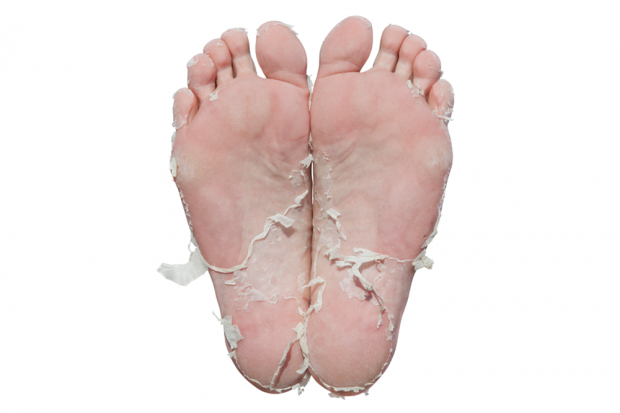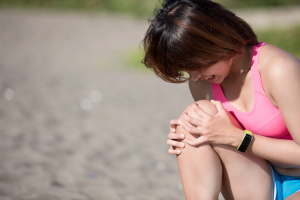Skin Deep Baby Foot Mania: The Strange Truth About Baby Foot Peel
It’s often described as “weird,” “gross,” “disgusting,” and “creepy,” yet Baby Foot fruit acid peels are flying off shelves across the nation. Why is this strange Japanese foot care exfoliant getting rave reviews when it’s literally making people crawl out of their skin? We’re delving deep into the horrifying world of dead cell and callus removal to find out.
All right ladies and gentlemen: For this article, you’re going to have to shed your sense of refinement and be willing to get knee-deep — scratch that, neck-deep — in a pile of sloughed off dead skin cells. Embrace your inner weirdo and allow the sickening thought to bring you a moment of happiness. Impossible, you say? Keep reading and you’ll be second-guessing your hesitation as you jump for joy in a flurry of Baby Foot Peel dead skin like it’s money raining down at the club.
Baby Foot Peel: The Nasty Facts
Now that you’re ready to get real, let’s discuss exactly what a Baby Foot peel is. Originating in Japan, the imported foot care product consists of two gel-filled booties that contain alpha hydroxy acids (or, as the company likes to sweetly call them, fruit acids). These fruit acids violently yet ever-so-gently remove the hard skin, corns and calluses that build up on the feet by reducing the adhesive power between the dead skin and the baby soft skin underneath. Basically, for about $20, a Baby Foot peel takes your feet through a snakelike metamorphosis that will have you peeling away layers of skin in the same way you did as a child when Elmer’s glue dried onto your tiny, snotty hands. Ah, the sickening satisfaction!
The process starts, according to the instructions on the back of the box, by washing and soaking your feet and then putting on the Baby Peel booties, which are filled with a gel containing 17 types of natural extracts and acids. (It’s the same stuff found in fruit, but this is definitely not something worthy of ingesting. Not that you could ingest anything once you see what happens next.)
Baby Foot Reviews: Peeling Feet Never Felt So Sweet
After wearing the liquid booties for about an hour — an hour in which under no circumstances do you try walking unless you’d like to face-plant Slip ‘N Slide style — you simply remove the booties, soak your feet every day and wait. And wait some more. And wait. Wait. Wait. Wait... Will this waiting ever end? Worst waste of $20 ever!
Oh, wait... You spoke too soon, because after about five days, something completely disgusting and equally exhilarating starts to happen: the skin on your feet starts falling off in pieces and swaths big enough to patch together into a mini blanket (which you would use if you were the Jeffrey Dahmer type). The official instructions say not to pull off the dead skin, but you won’t be able to help yourself. It’s like trying to keep your hands off a scab or a pimple: Ain’t gonna happen.
No matter what you’re thinking at this point, it may help to know that nothing about the Baby Foot peel process is painful. In fact, other than a slight tingle some experience during the bootie-wearing phase, the process doesn’t feel like much of anything at all — physically, anyway. But emotionally? Watching the dead cells peel off and expose the brand new, soft skin below is like sex in box: renewing, addicting, pleasurable, intense. So the next time you get a booty call, tell ‘em you’ve already got booties for extreme satisfaction, thankyouverymuch. They’re Baby Foot booties, and baby, they are great!
Notice concerning medical entries:
Articles having medical content shall serve exclusively for the purpose of general information. Such articles are not suitable for any (self-) diagnosis and treatment of individual illnesses and medical indications. In particular, they cannot substitute for the examination, advice, or treatment by a licensed physician or pharmacist. No replies to any individual questions shall be effected through the articles.






